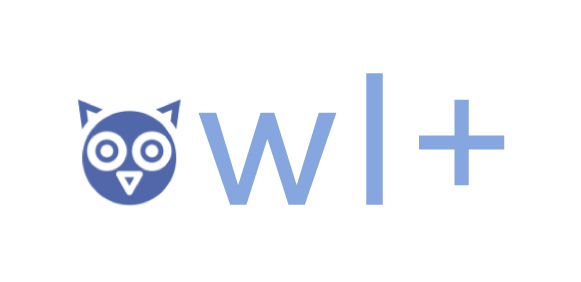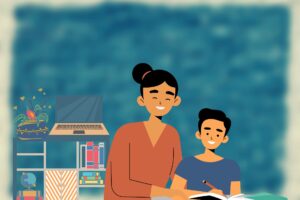4 Levels of education
First of all we will give you a short overview of the Dutch education system. Getting to know key information about the Dutch education system can help you to compare the Frisian situation to your own national (or regional) context and the situation of your language.
Maybe you will find some commonalities?
If you are already familiar with the education system in the Netherlands, feel free to skip the slides below, and scroll further down to the next section.
Dutch education system
Frisian language education
Now we turn our focus to Fryslân and the Frisian language at schools. The education system as described in the slideshow above applies to all provinces of the Netherlands, and Frisian being an official language in the province of Fryslân means it also has to have a place in education. In the following sections you will learn if and how Frisian is part of different education levels.
Pre-school education 
In Fryslân around 265 childcare and pre-school education centres offer bilingual care (Dutch and Frisian) and are connected to the expertise centre SFBO (Sintrum Frysktalige Berne-opfang), which is specialised in bilingual education in early childhood education (Taalplan Frysk 2023, n.d.; SFBO, n.d.).
The province of Fryslân in cooperation with the ECEC expertise centre SFBO support ECEC locations to develop a language policy and practices that support bilingual education. Due to the dominant position of Dutch in the media, education and social life, it is necessary that Frisian receives extra support at the level of pre-school education.
The aims of this initiative are to create an environment that stimulates children’s language development, promote the added value of bilingualism and multilingualism, and to stimulate bilingualism in all children through consistent use of both languages.
To achieve these goals different practices can be applied, depending on the ECEC location’s needs, for example:
- Language nest: A Frisian-speaking group or day-care centre (not as far as the children’s home language is concerned, but as far as the leader’s language of interaction and instruction is concerned)
- Two-way immersion, one-teacher-one-language: A bilingual group or day-care centre in which one leader consistently speaks Frisian and the other consistently speaks Dutch. The total offer must pay ample attention to Frisian.
- Two-way immersion: A bilingual group or day-care centre in which Frisian is used by pedagogical staff and volunteers as the working language and Dutch is given a place in limited language activities.
Primary education
At primary school level, Frisian is a compulsory subject in Fryslân. Exempted from this are only those schools located outside of the so-called “Frisian language area” (the Wadden islands and the municipality Weststellingwerf). Depending on the school, Frisian is taught as a subject and used as the medium of instruction. There are also trilingual primary schools in Fryslân teaching Dutch, Frisian and English.
Primary schools fall into one out of seven profiles (A-G) which describes the attainment targets by that school for the subject Frisian. The profiles’ targets are based on those defined in the Primary Education Act. Taalplan Frysk’s goal is that every primary schools complies with all core objectives (profile A) in all groups by 2030.
If you like to learn more about the profiles in Frisian primary education, you can navigate through the drop-down menu below.
There are 357 primary schools in the Frisian language area in the province, which fall into a profile from A-F. You can see the breakdown of the different profiles below.
Insights into learning Frisian at a (pre-)primary school
Firstly, we visit a trilingual school in Fryslân that teaches (in) Dutch, English, and Frisian.
We visit one more primary school in Fryslân. Not only Dutch and Frisian are part of daily school life in the province but also other languages that pupils speak at home. The documentary below takes us to Heerenveen, where we visit a primary school and a daycare centre and learn about the benefits of integrating home languages in school. Since this documentary is rather long, we added “road signs” so you can fast forward to the contents you might be most interested in (though watching the entire documentary is highly recommended ;)).
Takeaways
Which similarities to your language can you identify so far?
The information about pre-school and primary education covers different aspects, such as supporting organisations, teaching approaches, and objectives. Some of these might correspond to activities that are carried out in your region, and others might have sparked your interest.
To find out what approaches could work for you, you could ask yourself questions like:
- Which institutions offer language teaching advice in my region on pre-school and primary level?
- Does my school/institute follow a language policy for bi- or multilingual education?
- What are the attainment targets for my language?
- Which language teaching approaches do my colleagues apply in the classroom? Do we follow the same ones?
Secondary education
At lower secondary school level (years 1-2), Frisian is a compulsory subject in Fryslân. Exempted from this are only those schools located outside of the so-called “Frisian language area” (the Wadden islands and the municipality Weststellingwerf).
At the level of secondary education, there are five profiles (A-D) which describe the attainment targets by the school for the subject Frisian. The profiles’ targets are based on those defined in the Secondary Education Act. Taalplan Frysk’s goal is that by 2030, every school has reached profile A and its attainment targets in each year of lower secondary education. Additionally every school should offer Frisian as a final examination subject.
Just like above, if you like to learn more about the profiles in Frisian secondary education, you can navigate through the drop-down menu below.
Insights into learning Frisian at a secondary school
In this video, we visit a secondary school in Fryslân and get an impression of how they are working on improving pupils’ reading skills.
Takeaways
Which similarities to your language can you identify so far?
The information about secondary education covers different aspects, such as supporting organisations, teaching approaches, and objectives. Some of these might correspond to activities that are carried out in your region, and others might have sparked your interest.
To find out what approaches could work for you, you could ask yourself questions like:
- Which institutions offer language teaching advice in my region on secondary level?
- Does my school/institute follow a language policy for bi- or multilingual education?
- What are the attainment targets for my language?
- Which language teaching approaches do my colleagues apply in the classroom? Do we follow the same ones?
- Can I introduce a project based activity (like the LêsNo example) into my curriculum?
References
Taalplan Frysk 2023. (n.d.-a). Voorschoolse educatie. https://taalplan.frl/nl/onderwijssectoren/voorschoolse-educatie/
Taalplan Frysk 2023. (n.d.-b). Primêr ûnderwiis. https://taalplan.frl/nl/onderwijssectoren/voorschoolse-educatie/
Taalplan Frysk 2023. (n.d.-c). Fuortset ûnderwiis. https://taalplan.frl/nl/onderwijssectoren/voorschoolse-educatie/
SFBO. (n.d.). SFBO: kennissintrum meartaligens jonge bern. https://www.sfbo.nl/
https://www.sfbo.nl/frl/sertifikaat-boartsjendewei-in-taal-derby-

